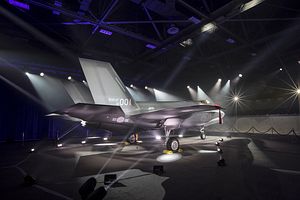By Robert Farley
 How can the United States recapture momentum in its technological competition with China? A new CNAS report titled Forging An Alliance Innovation Base lays out a long-term strategy for leveraging alliances to facilitate faster rates of innovation. Written by Daniel Kliman, Ben FitzGerald, Kristine Lee, and Joshua Fitt, the proposal effectively calls for is knowledge statecraft of the sort that the United States practiced after the end of World War II, but to some extent abandoned at the end of the Cold War. Their answer to the problem of China’s technological expansion is to pursue cooperative technology development with a select group of allies, and to build partner capacity to protect technological innovation from Chinese acquisition.
How can the United States recapture momentum in its technological competition with China? A new CNAS report titled Forging An Alliance Innovation Base lays out a long-term strategy for leveraging alliances to facilitate faster rates of innovation. Written by Daniel Kliman, Ben FitzGerald, Kristine Lee, and Joshua Fitt, the proposal effectively calls for is knowledge statecraft of the sort that the United States practiced after the end of World War II, but to some extent abandoned at the end of the Cold War. Their answer to the problem of China’s technological expansion is to pursue cooperative technology development with a select group of allies, and to build partner capacity to protect technological innovation from Chinese acquisition.
The argument is implicitly structured around a particular argument about how the United States won the Cold War. This argument, most concisely put forward in the work of Stephen Brooks, suggested that the United States derived enduring military and economic advantage by creating a broad-based, multilateral system of investment and innovation with Japan and Western Europe. This system enabled much more rapid technological innovation than the Soviet Union and its less advanced economic base could produce, even given extravagant state investment in research and development. Information protection policies designed to prevent the diffusion of technology to the Soviet Union and its allies backstopped this multilateral innovation system.
But China is not the Soviet Union; the threat it poses is more local, and yet it is more deeply intertwined in the global economy than the USSR could ever manage. This has made the problem of containment considerably more difficult, as China enjoys a huge domestic market, a robust economy, and a multitude of connections with the broader global economy that enable it to tap and drive trends in technological innovation. The report details China’s strategies of technological innovation at home and abroad, which most readers will be familiar with: heavy state investment, forced technology transfer, the cultivation of human capital in domestic and foreign universities, and finally direct technology theft.
The authors thus suggest pursuing a much narrower base, but one that still promises to offer significant advantages over China. They examine in detail the prospects of including four countries in what amounts to a broad-based technology consortium. These include Japan, Australia, Norway, and Israel. All four offer strong technological bases, and the former two have clear security concerns about the growing power of China.
The policy recommendations include ramping up technology scouting in partner states, internationalizing the effort to engage technology startups (effectively internationalizing the role of the Defense Innovation Unit), upgrading information sharing with partners, building allied capacity to protect knowledge by sharing cybersecurity best practices, establishing a military test facility consortium, enabling the founding of new multinational firms, reducing barriers to partner investment in the United States, and perhaps most interestingly establishing an ITAR-Free Zone in which companies would not need to go through the cumbersome ITAR process to transfer technology to partners.
To all of this, I would add that taking steps to further harmonize intellectual property procedures across the partnerships would undoubtedly smoothen technology sharing. Taken together, these proposals dovetail nicely with other calls to develop a coherent, coordinated system of cybersecurity resilience in the defense industrial base. The report includes a variety of efforts designed to spur innovation domestically, most of which will be familiar to readers of this literature. They describe a number of current policies designed to facilitate technology cooperation with allies, including a few that are somewhat obscure including, for example, the Wassenaar Arrangement to manage the transfer of military grade chip and software technology.
My next column offers some caveats about the effort to establish a multilateral allied technology consortium, especially in context of the Trump administration’s approach to international politics and the COVID-19 crisis.
No comments:
Post a Comment